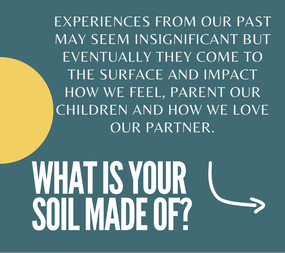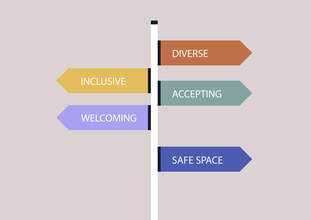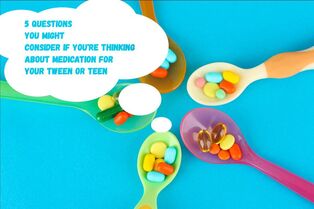 By: Amanda Craig, PhD, LMFT The biggest question I hear from parents of tween is: how do parents monitor screen time? I will say, when parents micromanage the amount of screen time and the content only, the relationship suffers. Tweens are frustrated with what feels like constant under attack while parents are fearful of the content and time spent and frustrated with the tweens inability to control their screen usage. It’s a recipe for disaster. Instead, I encourage parents to follow these four tips which lead to less screen time, better parental control and honors the relationship between parent and tween.
Ultimately screens don’t have to be the enemy our gut says they are. Look at them as just the “invention” vying for the current generation of kids attention. Like the TV was for our parents, like MTV was for us growing up. Rather than micromanaging the screens join them in their moments-be it on TikTok, playing in the backyard or watching a movie or a show together on the big screen. Let go of the times when they are using screens as downtime in a busy life and avoid getting caught in the screens against parents battle. Because we know who wins that war in the end!  By Amanda Craig PhD, LMFT Family Therapist Author of the recently released book: Who Are You and What Have You Done With My Kid: Connect With Your Tween While They Are Still Listening Working as a marriage and family therapist, one of the great joys of my work is helping couples and families feel more connected, and for the individual family members to heal hurt parts of them that lead to feeling more alive and responsive in relationships. One of the questions I get asked regularly is, “how come I know the right answers yet I still don’t do the right thing in the moment”? Well, there is a very simple answer to that question which leads to a very complex life journey. Experiences from our past may seem insignificant but eventually they come to the surface and impact how we feel, parent our children and how we love our partner. In my book, Who Are You and What Have You Done With My Kid: Connecting While They Are Still Listening, I make this analogy: It’s like this: you move into a house; perhaps you’ve even built it yourself. It sits on a piece of land. The view is great. What a future you see! The thing is, we sometimes get so caught up in the view we forget to look at the ground beneath us- The soil on which our house sits. Perhaps there are contamination or water issues, or rocky bedrock causing uneven ground. If so, our house will have problems. So we have three choices: ignore the problem and hope for the best (denial), move (denial, denial), or remediate the soil to create a solid base and a way forward. You see, our history doesn’t stay in the past it may lay dormant and seem unimportant for years. Until we have families of our own. And then the soil on which we are building our family is revealed in our feelings and behaviors towards our partner and our kids. It could be growing up with parents where we experienced feelings of judgment regularly or never being good enough, perhaps living with parents who had untreated addiction and mental illness which left us feeling neglected, abandoned or fearful. In addition, our soil issues can form from experiences of academic disabilities that went undetected, struggles with being bullied, or peer conflicts that left us feeling scared or alone. Maybe a painful romantic relationship that left us feeling abandoned or small. This isn’t an exhausted list but common experiences I see in my practice that stunt our ability to be healthy ourselves while raising a family.  By Amanda Craig PhD, LMFT Could the holiday season get more stressed? With holiday decorations now showing up before Halloween, the social media-induced pressure to produce Insta-worthy activities, the shopping, the parties (just you wait: they’re coming. Lots of pent up COVID demand there) and the card …oy, the card. Then there’s our tween, at the crazy-making crossroads between no-longer-a-little-kid but not-yet-a-teen. Sure, ‘tis the season of joy, sugar plum fairies, the eight days of Hanukkah and all that, and these are absolutely first world problems. But. While I don’t deny the good stuff, there are truths about the holidays people don’t usually talk about—the kind that put our holiday train through unexpected turns, hills and awkward, unwanted lulls as we careen on an exhausting ride to January 1. There are also things we can do about them. So, if we really want to arrive at a Happy New Year, let’s start by looking at these truths and the ways to counteract them.
The problems we have in family relationships throughout the year are often magnified during the holidays. Those who drink tend to drink more. If we argue, we’ll argue more. Financial stress becomes bigger financial stress. And so on.
As the pace intensifies and we’re out more, we pay a price with more stress and hits to our physical and mental health …social exhaustion is a thing…and the wheels come off the rails.
Will our tween join the family fun or keep to themselves? Will they be enthusiastic about the long-standing family traditions or shrug them off? Will they embarrass us with bad behavior in front of the extended family or show up cheerfully? Worry too much …and the wheels come off the rails. Here are five easy tips to keep the holiday train on track. 1. Give your undivided attention. Now. Not when everything is done. Stop multitasking. Make eye contact. Be fully present with your kids and your partner. Give them the experience of being your sole focus, your only care. It matters. It allows our children to feel seen. It shows our partner we care about them. It strengthens our emotional connection and nourishes our relationships. Five minutes of undivided attention nourishes us more than three hours together multitasking. 2. Listen and share. Talk with curiosity and wonder. Ask:
 By Coco Jepsen With June being pride month, there is a spotlight highlighting those in the LGBTQ+ community for 30 days. While that encapsulates many, there are others who do not identify as a member of this community, but rather an ally of it. To ally is defined as “ to unite or form a connection or relation between'' by The Merriam-Webster Dictionary, but how can we do this in our community, and how can we carry this through the other 11 months of the year? We can:
Inclusive language is a small step that can do wonders making those in the LGBTQ+ community feel less isolated. When college kids return home for the summers, don’t ask if they have a boy/girlfriend specifically, but rather a partner, or if they’ve met anyone special. Making these assumptions of others in our vernacular may be habitual and entirely unintentional, but carry a certain weight to those in the LGBTQ+ community, or those who are unsure if they’re a part of that community. Humans, however, are creatures of habit. It takes time and education for us to relearn vocabulary and terminology. This is normal and won’t happen overnight, but we can be proactive learners through curiosity and asking questions. As the director of the Dennis L. Carlson Sexuality Education Studies Center at Miami University, Megan Kuykendoll, points out, “It’s not every queer person’s job to explain how to use every pronoun or term”. We must take it upon ourselves to use resources such as www.thetrevorproject.org and pflag.org to educate ourselves and others as a starting point. Learning is a process and comes with experiences we have, and won’t be seamless. Professor Kuykendoll explains this learning process as, “not about being 100% right, it’s acknowledging when you messed up and doing better”.  By Whitley Louvier, LMFT “Ugh, not again!” Anthony rolled his eyes as he saw the text alert from the budget app he shared with his husband letting him know that Matthew had just made a purchase at his favorite store. Money was a frequent source of conflict between the two of them, with Matthew admittedly being the “spender” and Anthony “the saver”. They had recently had a discussion about the need to save for the future, and Anthony found himself getting more and more angry the more he thought about Matthew’s apparent disregard for that joint decision. That evening at home after work, Anthony exploded as soon as he saw Matthew. “How could you do this after the conversation we had just the other day? You just don’t care about the future! We’ve had so many of these conversations before that too, I’m so tired of having the same argument over and over!” Matthew responded back with anger, “What’s the big deal, it wasn’t even that much money! I work too, I deserve to buy certain things if I can afford them! You need to loosen up and stop attacking me!” According to Dr. John Gottman, a psychologist and relationship researcher, 69% of conflicts between a couple are perpetual problems, meaning they are due to differences in perspective and personality and cannot be solved. Perpetual problems are also sure to resurface between a couple again and again, which understandably can be frustrating and discouraging.  By Jean Gauvin PhD, MD 1. What is the rate of mental disorders in children and teenagers? According to the National Institute of Mental Health, up to 50% of children and adolescents meet criteria for a mental disorder in the diagnostic and statistical manual (DSM) by age 18. That means that up to half of children and adolescents are struggling significantly with emotional issues to the point that they are suffering and have impaired functioning. Medication is often used to help relieve the suffering caused by mental illnesses and disorders by targeting chemical imbalances in the brain. 2. How do you determine whether to prescribe medication? Several factors are taken into consideration when determining whether a dose of medication is appropriate. These include but are not limited to a patient’s symptoms, his or her age, sometimes his or her gender, possible interactions with other medications that he or she is also taking, the duration of treatment, as well as potential side effects. This is especially important since some psychiatric medications can have more severe long–term side effects. For example, antipsychotics and mood stabilizers can cause obesity, high cholesterol, and diabetes. These side effects, in turn, can lead to blockages in the arteries that increase the risk of heart disease and stroke. 3. Are there any child-specific considerations that factor into the decision to prescribe a medication? Whether it comes to treatment for an adult or a child, the prescribing of medication generally occurs when the benefits outweigh the risks. However, in children, there is an added subtle risk that may be difficult to accurately assess: the risk on the developing brain. Though all of our medications are tested and proven to be generally safe, we are never exactly sure what subtle effects they may have on the developing brain of a child. There is not a reliable way to determine exactly what kinds of subtle effects they may have over, let's say, twenty years on factors such as personality or cognitive development. That is why I adhere to a conservative approach in the treatment of all patients, but especially when it comes to the treatment of children. Depression... the cloud of sadness over life. Sometimes the clouds lightly shadow the joys of life but they still shines through. It’s a mild discomfort but you have learned to live with it. And even when the sun is out, you know there will be another sad day to come.
Sometimes depression is seen as dark angry clouds. Have you ever known someone to be easily angered and frustrated at the drop of a hat? That can also be an expression of depression. We think depression is always expressed through sadness but sometimes its through anger, especially for men. For other people the clouds move in and the sunshine is just absent. The world is colored by thoughts and feelings of pain or deep numbness. The hurt can come and go in waves or stay for days or weeks at a time. Some times it feels unbearable to survive. And it is hard to see any sunshine at all. Depression isn’t the same for everyone. But you might experience:
What happens in the brain of depression: Historically, research studies on depression proposed that depression is caused by low levels of individual neurotransmitters - serotonin, dopamine, norepinephrine, and/or histamine - in the brain. However, we now understand that depression is caused by a complex interplay between genetics, dysfunctional systems of brain circuits, temperament/personality traits and environmental stressors. In the brain, the most common abnormalities found on MRI are bright spots in the basal ganglia and the thalamus and reduced sizes of the hippocampus and caudate nucleus, all of which are deeper, more primitive regions of the brain with complex functions preserved across mammalian species. PET scans of depressed patients commonly show decreased metabolism/brain activity in the frontal brain regions which are responsible for attention, memory, concentration, mood regulation, and other higher-level brain functions that make humans uniquely prone to bouts of depression. Ever Wonder: What is Habit Forming Alcohol Use?
You know you have habit forming alcohol use when:
Why does alcohol mute happiness? In the brain, alcohol initially boosts the effect of calming neurotransmitter GABA and releases feel-good endorphins that stimulate opioid receptors. However, as blood alcohol level rises, so does its toxic by-product acetaldehyde which is thought to be responsible for the next-day hangover and moodiness. Alcohol also negatively impacts sleep, as waning blood alcohol levels disrupt the brain’s natural sleep cycle and impede the ability to have a deep, restorative sleep that is crucial for next-day energy and mood stability. Can habit drinking become a bigger problem? A seemingly harmless habit can escalate into dependency as the brain’s feel-good receptors grow accustomed to the presence of high levels of alcohol in the blood to maintain a new homeostasis. In turn, the absence of alcohol signals the brain’s opioid receptors and reward pathways to cue alcohol-seeking behavior (i.e. cravings); in severe alcohol use disorder, the sudden discontinuation of alcohol can result in alcohol withdrawal symptoms that can progress to life-threatening seizures and delirium tremens – a syndrome that may include involuntary body shaking, confusion, hallucinations, and irregular heart rhythms. There are some common thoughts and behaviors people who are diagnosed with ADHD report. Doing the behaviors listed below does not mean you have ADHD but that you might want to get a formal assessment to determine if a diagnosis of ADHD fits for you. To know will help you identify ways to cope better, improve the way you feel about yourself and how you impact close relationships.
You may have ADHD if:
Why this happens... In the brain of someone with ADHD, you’re dealing with a frontal lobe that is under-responsive to dopamine and norepinephrine – neurotransmitters crucial for problem solving, organized decision making, maintaining the motivation to carry out a task, and for blocking out distractions from the environment. In individuals who do not have ADHD, their brains are better able to pump the brakes on making rash decisions, making easier for them to resist the many distractions around them and to think more mindfully. The ADHD brain is functioning as if the brakes have been cut and less able to slow down the urges to act on each thought that comes to mind.  By Amanda Craig, PhD, LMFT
|
Categories
All
Archives
March 2023
|
[email protected]





 RSS Feed
RSS Feed